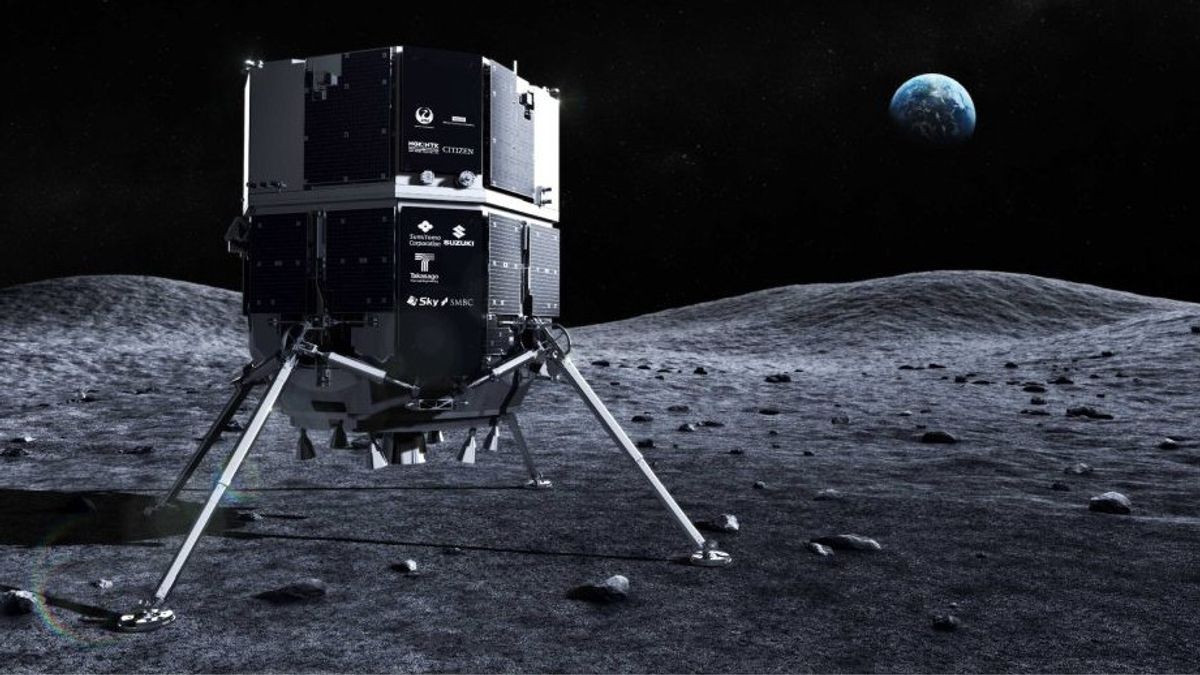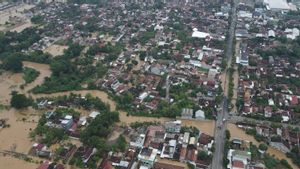JAKARTA - Japanese company ispace finally found out the cause of the failure to land on the Lunar Lander Hakuto-R Mission 1 (M1), which fell to the surface of the Moon crater recently.
The Hakuto-R M1 was launched on December 11, 2022, from the Cape Canaveral Space Force Station in Florida, United States (US), on a SpaceX Falcon 9 rocket, marking the Japanese company's inaugural mission.
Operations specialist at the ispace Mission Control Center in Nilonbashi, Tokyo, managed to find the reason behind the failure, where Hakuto-R M1 miscalculated its distance to the surface.
On April 26, 2023, at 00:00 p.m. Japanese Standard Time, the lander began a sequence of dips from an altitude of about 100 km above the lunar surface. At the end of the planned landing sequence, it approached the lunar surface at a speed of less than 1 m/s.
The operation was confirmed to run according to expectations until around 01.43, which was the scheduled landing time. During the period of decline, unexpected behavior occurred with a measurement of the height of the Hakuto-R M1.
The lander estimates its own altitude is zero, or already on the lunar surface, but it turns out that it is still at an altitude of about 5 km above the lunar surface.
After reaching the scheduled landing time, the Hakuto-R M1 continued to fall at low speed until the propulsion system ran out of fuel. At that time, the landing was still controlled from the lander stopping, but then it fell freely to the surface of the Moon.
The reason is likely because the software is not working as expected. Based on a review of flight data, as the Hakuto-R M1 is navigating to the planned landing site, the altitude measured by the onboard sensor increases sharply when it passes through a large cliff with a height of about 3 km on the lunar surface, which is designated as the crater edge.
"Now, we have been able to identify issues during landings and have a very clear picture of how to improve our future mission," said ispace founder and CEO Takeshi Hakamada in an official statement, quoted Monday, May 29.
"While it is unfortunate that we cannot fully meet the expectations of all of our stakeholders, including our customers, we are all in space proud of what we have accomplished in Mission 1 and are very positive about what we can achieve."
Furthermore, onboard software mistaken for the cause of this discrepancy is the abnormal value reported by the sensor, and after that the sensor's measured height data was intercepted.
One of the main factors causing this design problem is the decision to modify the landing site after a critical design review was completed in February 2021. The modification affects the verification and validation plan although many landing simulations were performed before landing.
Seeing this incident, ispace then considered modifications in its overall analysis regarding the successful completion of the mission.
All of that information will be included in the software design, as well as updating and expanding the scope of the simulation of landing sequence preparation for future company missions, including Mission 2 and Mission 3, to improve the accuracy of landing sequences.
We have started working on Mission 2 and Mission 3. We are ready to face challenges and make every effort to get better. We will ensure that the valuable knowledge gained from Mission 1 will take us to the next stage of evolution," explained Hakamada.
The next mission is under development with launches expected in 2024 and 2025. ispace has also launched a lunar data business concept to support new customers as gateways to doing business on the Moon.
The English, Chinese, Japanese, Arabic, and French versions are automatically generated by the AI. So there may still be inaccuracies in translating, please always see Indonesian as our main language. (system supported by DigitalSiber.id)













